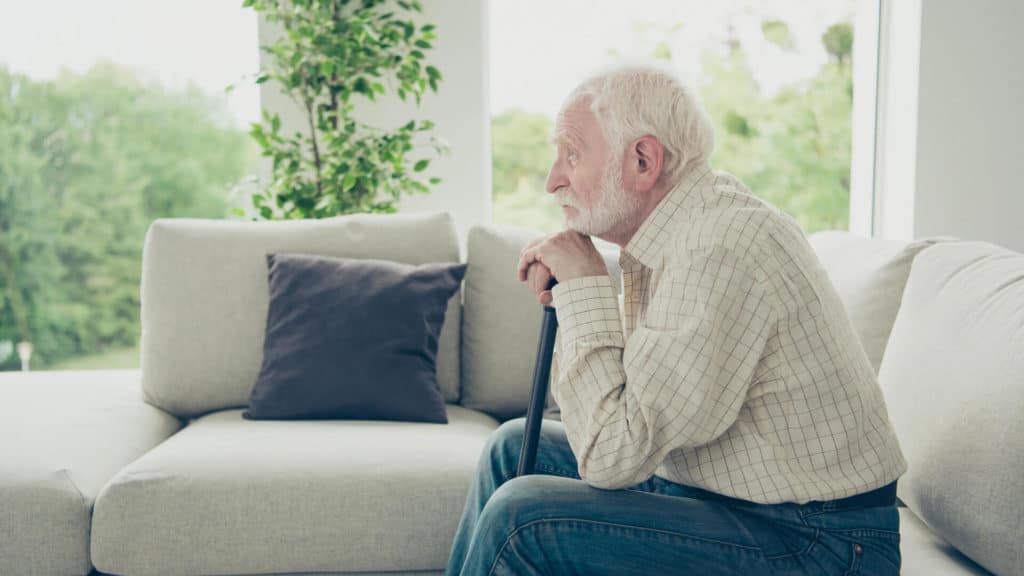According to the Administration on Aging, approximately 29 percent, or 11.3 million seniors lived alone in 2010. While at the same time, an estimated 12 percent of seniors 65 and older — more than 5 million — also needed assistance to perform daily activities. It’s clear that most seniors want to stay at home as they age. The question may be, should they? Every situation is unique, however if you or your senior loved one is living alone make sure you’re aware of these dangers before you answer.
5 Dangers for Seniors Who Live Alone
- Accidents
It’s unfortunate but true that as we age our muscles can be weaker, bones more brittle, reaction times slower, sight not as good and our balance may be off, putting us more at risk for accidents, particularly at home. Two of the biggest risks for seniors are falls and medication errors.
The CDC reports that nearly a third of U.S. seniors fall each year and about half of all falls that require hospitalization take place at home. A National Institutes of Health study also found that 40 percent of seniors take five or more prescription medications and 90 percent take at least one prescription, yet as many as 55 percent of seniors take their medications incorrectly.
- Social Isolation
You may initially rank social connectedness low on the list of concerns as you or your loved one age, but the dangers are much more profound than you may think and one of the key risks is living alone.
The AARP cites isolation as a growing health epidemic that’s as bad for your health as smoking 15 cigarettes a day. What’s more, those who are socially isolated —feeling detached physically or psychologically, or being disconnected from support groups of family, friends and community — have a 26 percent increased risk of early death.
- Malnutrition
Proper nutrition for seniors is crucial and complicated. As we age, our body needs more of certain nutrients, metabolism slows, our palate and digestion may change, medications may affect taste and chronic conditions can affect appetite and may require dietary restrictions.
Who needs the trouble right? It’s much easier to opt for frozen dinners and take out, especially when living alone. And that perhaps is why many seniors show signs of malnutrition. In fact, senior malnutrition costs the United States $51.3 billion a year according to the Alliance on Aging Research.
- Overlooked Illness
Sometimes you just need another set of eyes. That’s certainly true when it comes to health. When you live with someone, they may notice signs and symptoms of illness that you don’t or choose to ignore. Take Alzheimer’s disease for instance. According to the Alzheimer’s Association, someone in the United States develops the disease every 65 seconds and one in 10 people age 65 and older has Alzheimer’s disease.
But it’s a disease that often progresses slowly, and at first you may assume it’s just age-related forgetfulness. That’s why that second perspective is so important as while there is no cure, treatments to slow symptoms and improve quality of life are available so early diagnosis is key.
- Financial Strain
Home ownership is one of the biggest investments you’ll make and one of the biggest responsibilities you’ll ever have. Chances are you or your loved one at one point shared that responsibility with your spouse, but if it now falls squarely on your shoulders, it can be tough in many aspects – especially financially. From unexpected repairs to maintenance to safety and accessibility modifications, even day-to-day upkeep that you may now have to pay for someone else to do; your budget can take a hit.
What’s more, it can simply be harder to manage it all the older you get. Perhaps bills have been forgotten or worse you or your loved one have fallen victim to scams that have drained you financially. Scams in particular are a concern with seniors losing $36.48 billion each year to fraud or exploitation according to a True Link Report on Elder Financial Abuse.
Protecting Seniors from the Dangers of Living Alone
The solution seems simple right? Just don’t live alone. That may not be realistic if you neither have family to live with or who can live with you and you can’t afford in-home help.
Senior living can be a great alternative and today’s communities are far from the stereotypes of the past. Benefits of senior living include:
- Just the right amount of support and assistance to foster your independence but ensure peace of mind and safety.
- A worry-free lifestyle with housekeeping, laundry and maintenance taken care of along with amenities such as pools and fitness centers.
- Monthly calendars filled with clubs, classes, events, outings and plenty of common areas to host friends and family.
- Nutritious and delicious meals prepared by a dining staff that knows your restrictions and/or preferences, often in collaboration with a nutritionist or dietitian, and enjoyed in a restaurant-style setting.
Plus, when you compare the total cost of living at home — mortgage or rent as well as the cost of food, utilities, home maintenance, property taxes, insurance and entertainment in addition to the high cost of at-home care and/or modifications to make your home more accessible — you’ll find senior living may actually be less expensive!
For more information on comparing home care to senior living, check out our Stay or Go Guide!




